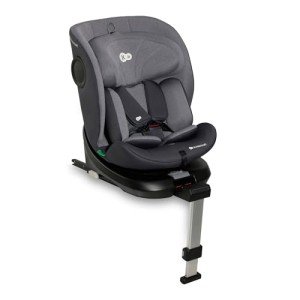The Leading Reasons Why People Perform Well Within The Pushchairs Industry
Strollers and Pushchairs: The Ultimate Guide for Parents
Choosing the ideal stroller or pushchair is one of the most necessary decisions new parents will make. With a range of options available, comprehending the distinctions and functions can considerably affect the experience of both moms and dads and children. This extensive guide aims to brighten the differences between both, the elements to think about when buying, and answers to frequently asked concerns.
Comprehending Strollers and Pushchairs
Strollers and pushchairs are typically used interchangeably, but subtle distinctions set them apart. A stroller is normally designed for infants and young children, providing a more versatile approach with included functions for convenience and security. On the other hand, pushchairs are generally intended at older babies who can stay up unaided and tend to be more lightweight and portable.
Key Differences Between Strollers and Pushchairs
Feature
Stroller
Pushchair
Age Range
Newborn to young child
Usually for 6 months to 3 years
Weight
Typically heavier due to additional features
Lighter and often simpler to carry
Recline Position
Can generally recline totally for babies
Limited recline; typically upright
Storage Space
More storage compartments and devices offered
Minimal storage, typically simply a small basket
Comfort
Designed with more cushioning and support
Less cushioning, lighter frame for ease of use
Foldability
May have intricate folding mechanisms
Often developed to fold quickly and compactly
Aspects to Consider When Buying a Stroller or Pushchair
When selecting in between a stroller or pushchair, a number of elements can shape your choice. Here are some necessary factors to consider:
1. Security Features
- Harness system (5-point is the safest)
- Stability and strength of the frame
- Brakes that lock securely
2. Comfort
- Padding and assistance for the kid
- Adjustable seat positions
- Ventilation for heat
3. Size and Weight
- How simple is it to transport?
- Will it fit in your lorry?
- Does it use up excessive storage space in your home?
4. Flexibility
- Is it adaptable for vehicle seats or carrycots?
- Can it deal with various surfaces (city vs rural)?
5. Cost
- What is your budget plan?
- Does the stroller/pushchair offer worth for its features?
6. Alleviate of Use
- How quickly can it be folded and unfolded?
- Is it simple to browse through crowds or tight spaces?
7. Resilience
- What products are utilized?
- The length of time is the guarantee?
8. Brand Reputation
- Look for brand names understood for producing quality items.
- Check out evaluations from other moms and dads.
The Types of Strollers and Pushchairs
Strollers and pushchairs can be found in numerous designs, each accommodating particular requirements. Here's a summary:
1. Basic Strollers
- Heavy-duty and well-padded.
- Ideal for everyday use.
2. Light-weight Strollers
- Really portable and simple to bring.
- Suitable for travel.
3. Jogging Strollers
- Created for active parents.
- Can manage rugged terrains.
4. Convertible Strollers
- Can adapt from a single to double stroller.
- Flexible and grows with the household.
5. Travel Systems
- Consists of an infant safety seat and a stroller.
- Offers smooth transitions from vehicle to stroller.
6. Umbrella Strollers
- Very portable and low-cost.
- Best for fast journeys and older babies.
Kind of Stroller
Pros
Cons
Basic
Strong, comfy
Much heavier and bulkier
Lightweight
Easy to bring
Limited functions
Jogging
Great for exercise and outdoor use
Might not be suitable for babies
Convertible
Adaptable for growing households
Bulkier than standard strollers
Travel System
Benefit of combined necessities
Can be expensive
Umbrella
Extremely portable
Less resilient
Frequently asked questions About Strollers and Pushchairs
Q1: At what age can a baby use a stroller?
The majority of strollers are ideal for usage from birth if they completely recline. Guarantee to check manufacturer guidelines, as some might just accommodate babies over six months.
Q2: How do I clean my stroller or pushchair?
Many strollers have detachable and washable fabrics. Usage moderate soap and water for the frame and inspect the fabric labels for specific cleaning instructions.
Q3: Can I utilize a stroller on numerous terrains?
Yes, particular types, like running strollers or all-terrain strollers, are specifically designed for irregular surface areas. Nonetheless, Pram Or Pushchair are not suitable for rough terrain.
Q4: How long can I expect my stroller to last?
Quality strollers can last a number of years, frequently up until the child is around 4 to 5 years old, depending on usage and care.
Q5: Are strollers safe for over night sleeping?
While some strollers use flat recline positions that appropriate for baby sleep, it's vital to follow safety guidelines and keep an eye on the kid while in the stroller.
Selecting the ideal stroller or pushchair is a decision that extends beyond simple option; it improves the parenting experience and guarantees the security and comfort of the child. By understanding the distinctions, examining various elements, and checking out the types readily available, parents can make an informed choice that accommodates their lifestyle and satisfies the requirements of their growing family. Remember to constantly prioritize security and comfort above whatever!
